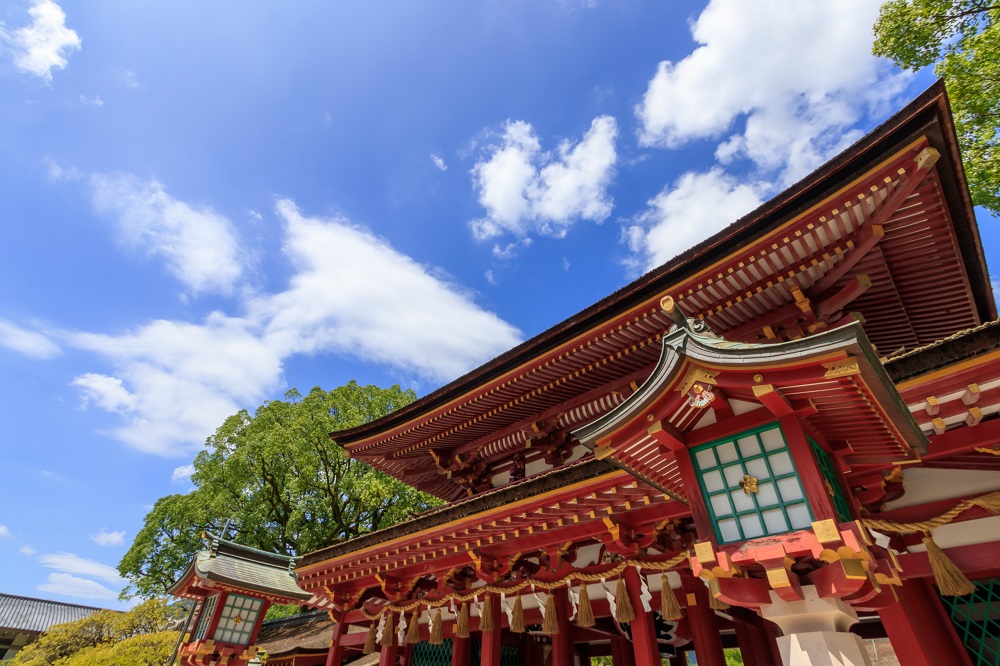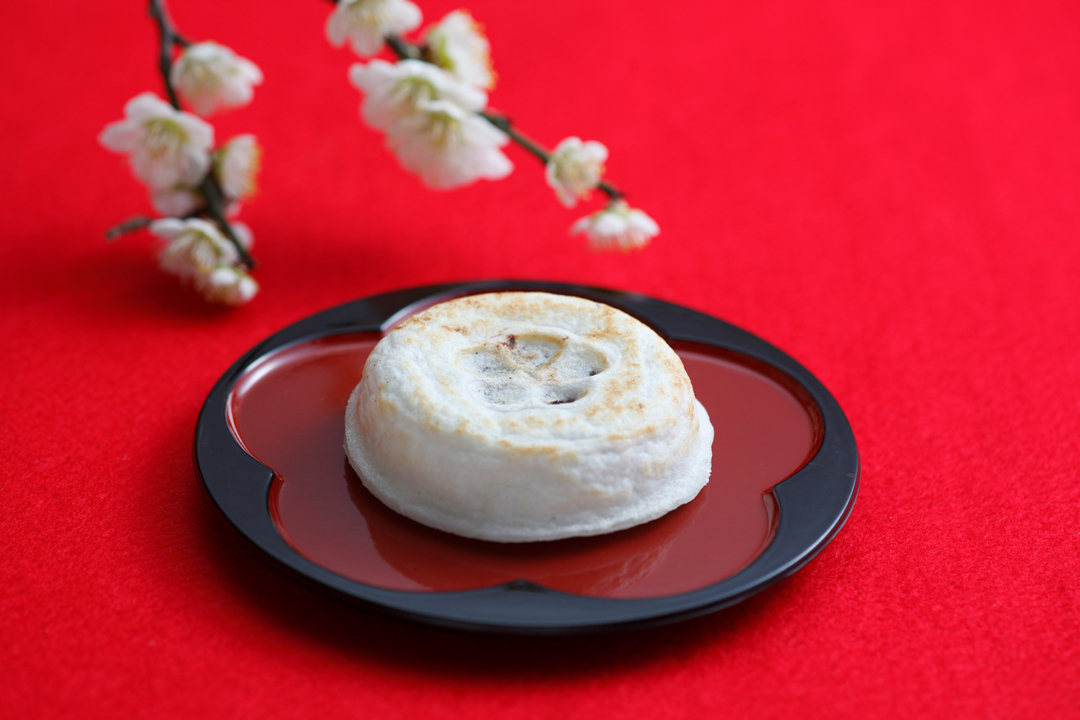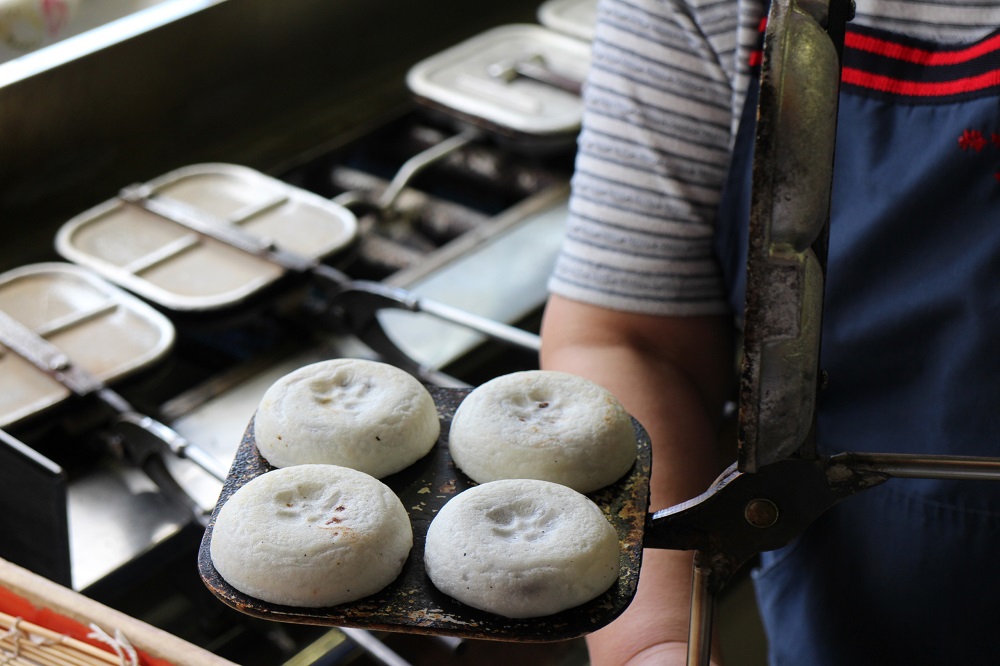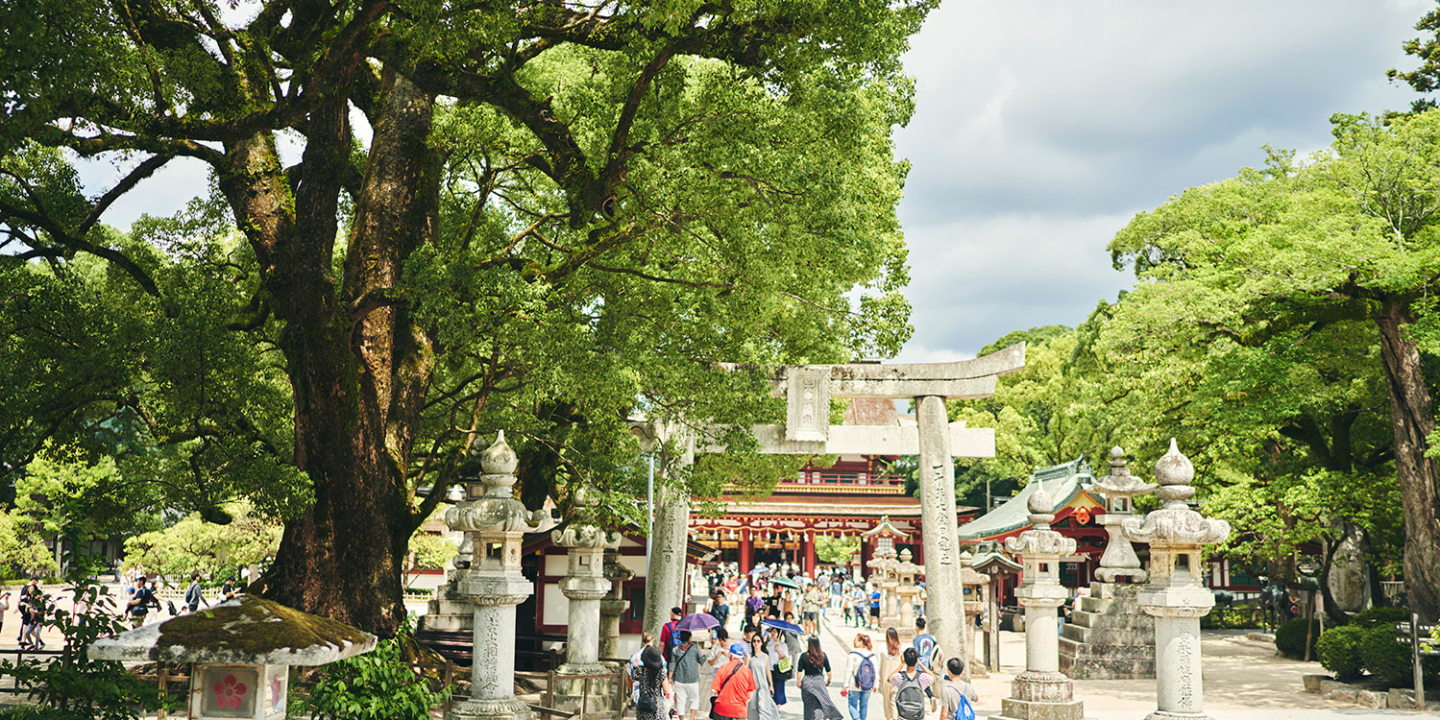Dazaifu Tenmangu Shrine, which attracts some 10 million visitors annually, is one of Kyushu’s most popular tourist destinations.

The shrine is dedicated to the deity of learning, culture, and the arts, often lovingly referred to as Tenjin-sama, and it is famous for the large number of students who visit every year to pray that they might pass their entrance exams and for academic success in general.
Dazaifu Tenmangu Shrine is designated as a National Important Cultural Property as it preserves the magnificence and splendor of Azuchi-Momoyama period architecture.
As the head shrine of approximately 10,000 Tenmangu shrines throughout Japan, it continues to attract many visitors from all over the country.
After passing through the torii gate, you will see a pond and three drum bridges.
This pond is called Shinji-ike (lit. heart-character pond) and was built in the shape of the Chinese character for “heart”.
The three drum bridges over the pond represent the Buddhist belief known as sanze ichinen, or the “three temporal states of one’s mind”, each bridge representing the past, the present, and the future.
It is believed that crossing each of these three bridges over Shinji-ike Pond purifies the body and mind.
Shinji-ike Pond is surrounded by camphor trees of the Tenjin no Mori forest, and in the spring the vermilion bridges stand out in beautiful contrast to the lush greenery.

There are approximately 6,000 plum trees of 200 varieties on the grounds of Dazaifu Tenmangu Shrine.
The sacred flying plum tree on the right side when facing the main shrine is said to have flown overnight from the capital city of Kyoto in pursuit of Michizane Sugawara after his exile to Dazaifu. It is the first tree on the grounds to bloom.
From the end of winter to the beginning of spring, this flying plum tree continues to bloom beautifully, reminding visitors of the legend.
Following the flying plum tree, a variety of plum trees bloom at different times of the year, spreading their divine fragrance throughout the shrine grounds.
The best time to view the plum blossoms at Dazaifu Tenmangu Shrine is from late January to early March each year.

One of Dazaifu’s most famous specialties is umegae mochi, literally plum branch mochi.
Walking along the approach to the shrine, you can smell the fragrant aroma of freshly baked umegae mochi rice cakes from every which way.

It is said that the origins of umegae mochi lie in the story of a woman known as Jomyoni who, dressed as an old woman from the neighborhood, took pity on Michizane, who was living in exile without proper food, clothing or shelter, and offered him a rice cake from the tip of a plum blossom branch.
And so, there is a deeply rooted connection between Michizane Sugawara (Tenjin-sama), Dazaifu Tenmangu Shrine, and the plum tree, and it is indeed fitting that the plum tree has come to be considered the symbol of Dazaifu Tenmangu Shrine.
At the Information Center located near the torii gate, you will find pamphlets and maps of the shrine grounds. They also have wheelchairs for rent, and can provide additional information about Dazaifu Tenmangu Shrine, Dazaifu souvenirs, and more.
The surrounding area is home to a number of other great things to see and do, including the Kyushu National Museum, Homangu Kamado Shrine, and more.
Dazaifu Tenmangu Shrine
Location: 4-7-1 Zaifu, Dazaifu City, Fukuoka Prefecture, 818-0195
phone number: 092-922-8225 (Inquiry response time/9:00-17:00)
Opening hours: 6:30-9:00 (varies according to season and facility)
Closed: [Dazaifu Tenmangu Shrine] No holidays, [Treasure House] Mondays (open if Monday falls on a national holiday), [Suga-ko History Museum] Tuesdays and Wednesdays
https://www.dazaifutenmangu.or.jp/
Cover photograph provided by 福岡県観光連盟














